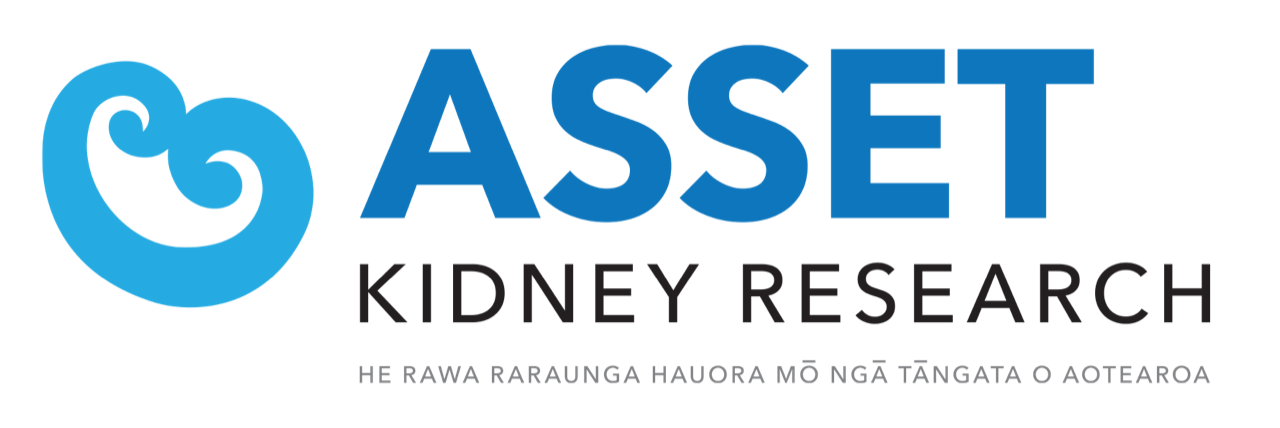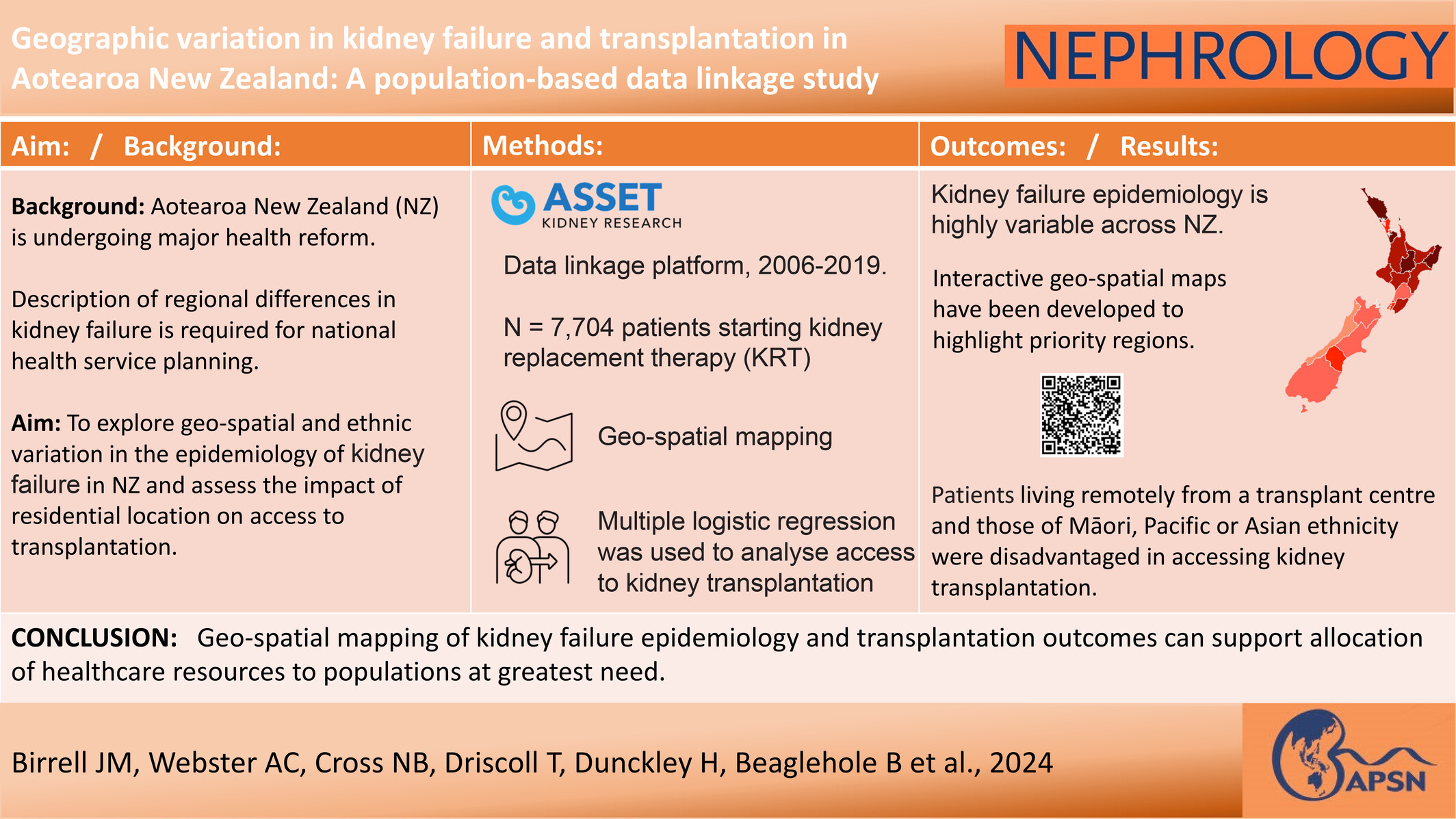Find full text here: Geographic variation in kidney failure and transplantation in Aotearoa New Zealand
Aim
This study aimed to describe the epidemiology of kidney replacement therapy (KRT) in Aotearoa New Zealand and assess the impact of residential location on access to kidney transplantation.
Methods
AcceSS and Equity in Transplantation (ASSET), a health-linked data platform, was used to identify people commencing KRT in New Zealand from 2006 to 2019 and analyse regional epidemiology. Health services were classified as ‘transplanting’, ‘intermediate’ or ‘remote’ depending on their degree of separation from a transplant centre. Multiple logistic regression modelling was used to assess the predictors of deceased donor waitlisting or living donor transplantation within 6 months after starting KRT. Web-based mapping software was used to develop interactive geospatial maps.
Results
The cohort was 7704 people newly starting KRT. Living in an intermediate [odds ratio (OR): 0.73 (95% confidence interval (CI): 0.61–0.88)] or remote [OR: 0.38 (95% CI: 0.27–0.54)) region and Māori (OR: 0.35 (95% CI: 0.28–0.44)], Pacific [OR: 0.32 (95% CI: 0.24–0.42)) and Asian (OR: 0.66 (95% CI: 0.50–0.87)] ethnicity were associated with a decreased likelihood of timely waitlisting or transplantation. Regional maps can be explored here.
Conclusion
There is marked geospatial and ethnic variation in the epidemiology of kidney failure and access to kidney transplantation across New Zealand. Geospatial mapping of kidney failure epidemiology and transplantation outcomes can provide opportunities to direct resources towards populations at greatest need.

